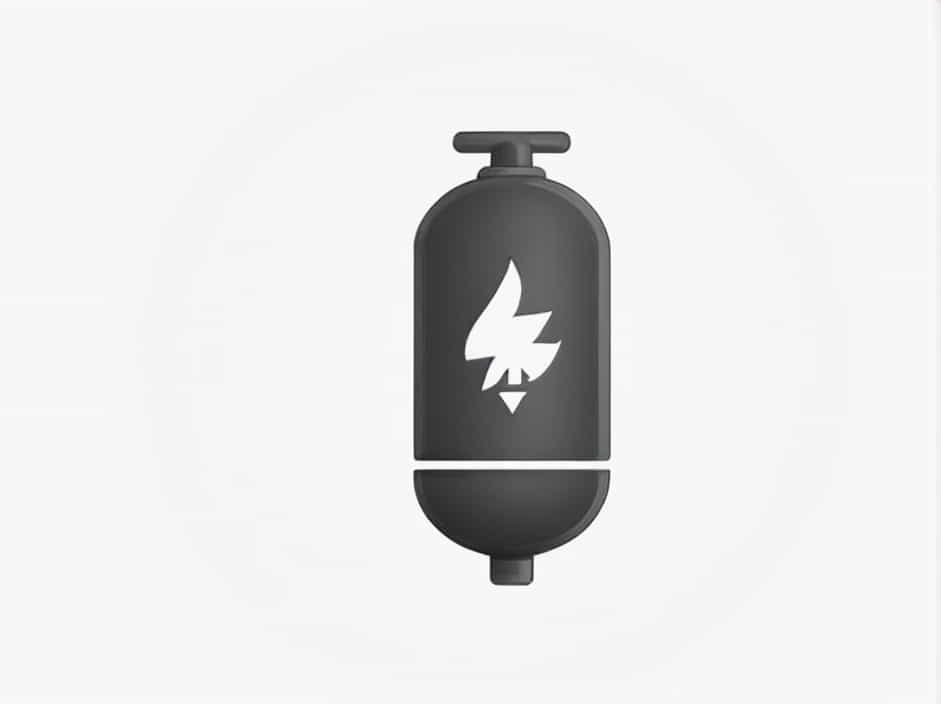A nitrogen accumulator is a crucial component in hydraulic systems, used to store and release energy efficiently. It helps maintain system pressure, absorb shocks, and improve overall performance. Understanding its role, working principles, and benefits can help industries optimize their hydraulic operations.
This topic explains what a nitrogen accumulator is, how it works, its advantages, and its applications in various industries.
What is a Nitrogen Accumulator?
A nitrogen accumulator is a pressure storage device used in hydraulic systems to store hydraulic fluid under pressure. It contains compressed nitrogen gas separated from hydraulic fluid by a bladder, piston, or diaphragm.
The stored energy in the accumulator helps the system function smoothly by compensating for pressure variations, absorbing shocks, and providing emergency power.
How a Nitrogen Accumulator Works
A nitrogen accumulator operates based on Boyle’s Law, which states that gas pressure and volume are inversely proportional. When hydraulic fluid enters the accumulator, it compresses the nitrogen gas, storing energy.
When the system needs extra pressure or flow, the accumulator releases the stored energy, maintaining system stability.
Key Components of a Nitrogen Accumulator
-
Gas Chamber – Stores compressed nitrogen gas.
-
Fluid Chamber – Holds hydraulic fluid under pressure.
-
Separator (Bladder, Piston, or Diaphragm) – Keeps nitrogen and fluid apart.
-
Valve System – Controls fluid entry and exit.
Working Cycle of a Nitrogen Accumulator
-
Charging Phase: Hydraulic fluid enters, compressing nitrogen gas.
-
Storage Phase: Energy is stored as pressure increases.
-
Discharge Phase: When system pressure drops, compressed gas expands, forcing fluid back into the system.
This cycle ensures smooth hydraulic operation and prevents pressure fluctuations.
Types of Nitrogen Accumulators
1. Bladder Accumulators
-
Most common type.
-
Uses a flexible bladder to separate nitrogen and hydraulic fluid.
-
Provides fast response time and efficient energy storage.
2. Piston Accumulators
-
Uses a moving piston to separate gas and fluid.
-
Ideal for high-pressure applications.
-
More durable but slower response time than bladder accumulators.
3. Diaphragm Accumulators
-
Uses a thin diaphragm to separate nitrogen and hydraulic fluid.
-
Compact and lightweight but has limited capacity.
-
Used in small-scale hydraulic systems.
Benefits of Using a Nitrogen Accumulator in Hydraulic Systems
1. Energy Storage and Efficiency
-
Stores hydraulic energy for peak demand periods.
-
Reduces energy waste by recovering excess hydraulic pressure.
2. Shock Absorption and System Protection
-
Acts as a shock absorber, reducing pressure spikes.
-
Prevents damage to valves, pumps, and pipes.
3. Pressure Compensation
-
Maintains steady hydraulic pressure, even with fluctuating loads.
-
Improves system stability and prevents cavitation.
4. Emergency Power Supply
-
Provides backup hydraulic power during pump failure.
-
Ensures critical functions continue in case of power loss.
5. Extends Equipment Lifespan
-
Reduces wear and tear on hydraulic components.
-
Minimizes downtime and maintenance costs.
Applications of Nitrogen Accumulators
1. Industrial Machinery
-
Used in press machines, injection molding, and metal forming.
-
Helps maintain pressure during high-demand operations.
2. Construction Equipment
-
Found in excavators, bulldozers, and cranes.
-
Improves stability and safety in heavy-duty machinery.
3. Aerospace and Aviation
-
Used in landing gear, brake systems, and hydraulic actuators.
-
Provides emergency pressure during system failure.
4. Automotive Industry
-
Helps in suspension systems and braking mechanisms.
-
Enhances vehicle stability and driving comfort.
5. Renewable Energy Systems
-
Used in hydraulic wind turbines and solar tracking systems.
-
Stores energy for continuous operation.
How to Maintain a Nitrogen Accumulator
1. Regular Pressure Checks
-
Ensure nitrogen gas pressure stays within recommended limits.
-
Prevents underperformance and potential system failure.
2. Inspect for Leaks
-
Check seals, valves, and fittings for fluid or gas leaks.
-
Address small leaks immediately to avoid major failures.
3. Monitor Fluid Contamination
-
Use clean hydraulic fluid to prevent damage.
-
Install filters to remove debris and moisture.
4. Replace Worn Components
-
Check bladders, pistons, and diaphragms for wear and tear.
-
Replace damaged parts to ensure efficient operation.
Common Mistakes When Using a Nitrogen Accumulator
1. Overcharging or Undercharging
-
Incorrect nitrogen pressure reduces efficiency and damages components.
-
Follow manufacturer’s recommendations for proper pressure settings.
2. Ignoring Maintenance Schedules
-
Failure to inspect and maintain the accumulator can cause unexpected failures.
-
Perform regular maintenance checks to prevent breakdowns.
3. Using the Wrong Type of Accumulator
-
Selecting the wrong accumulator type can lead to poor performance.
-
Choose a bladder, piston, or diaphragm accumulator based on system needs.
4. Failing to Consider Temperature Changes
-
High temperatures expand nitrogen gas, affecting performance.
-
Use temperature-resistant materials for better reliability.
A nitrogen accumulator in a hydraulic system plays a vital role in energy storage, pressure regulation, and shock absorption. By understanding how it works, selecting the right type, and following proper maintenance practices, industries can improve efficiency and extend the lifespan of hydraulic systems.
By incorporating nitrogen accumulators, hydraulic systems can operate more smoothly, safely, and cost-effectively across various applications.
